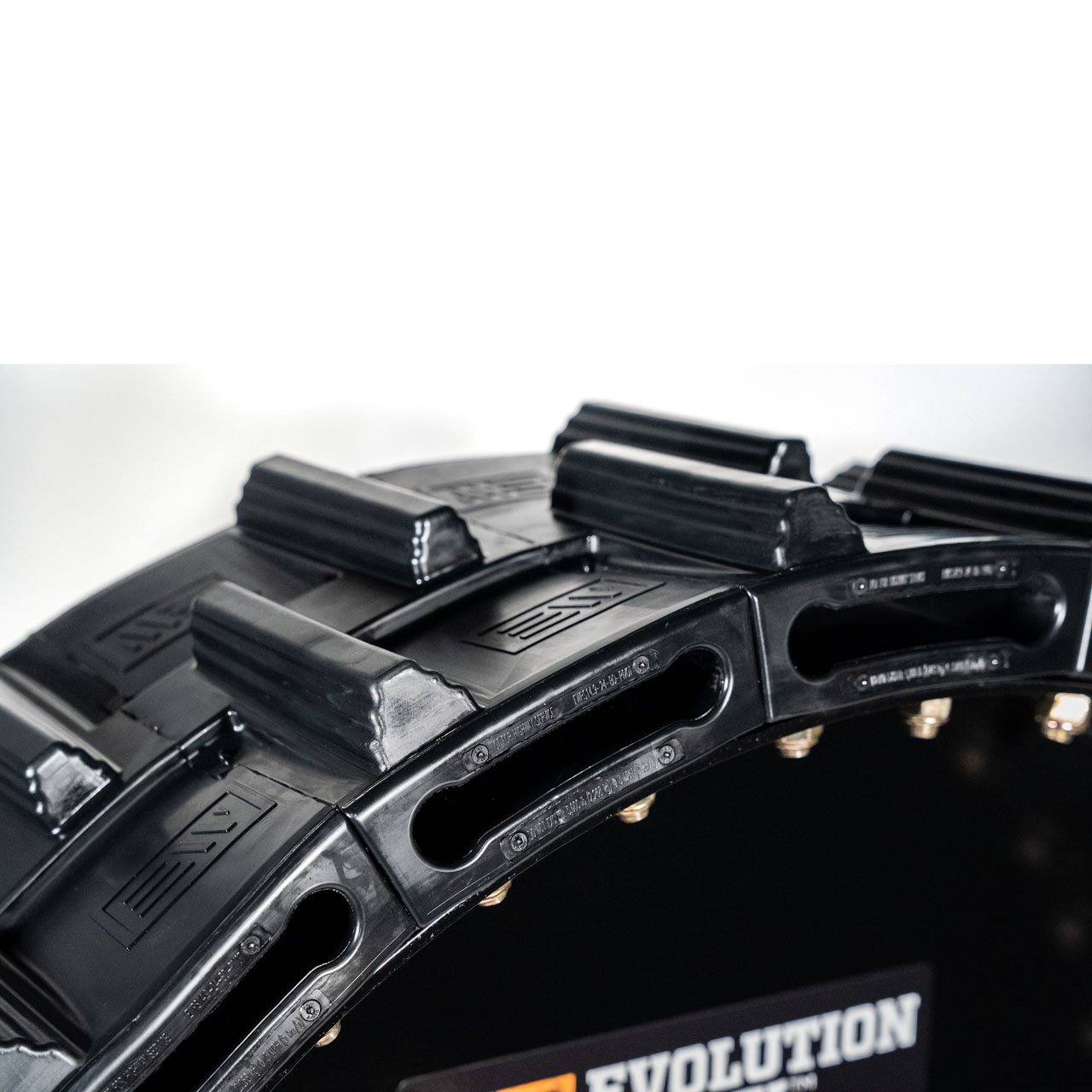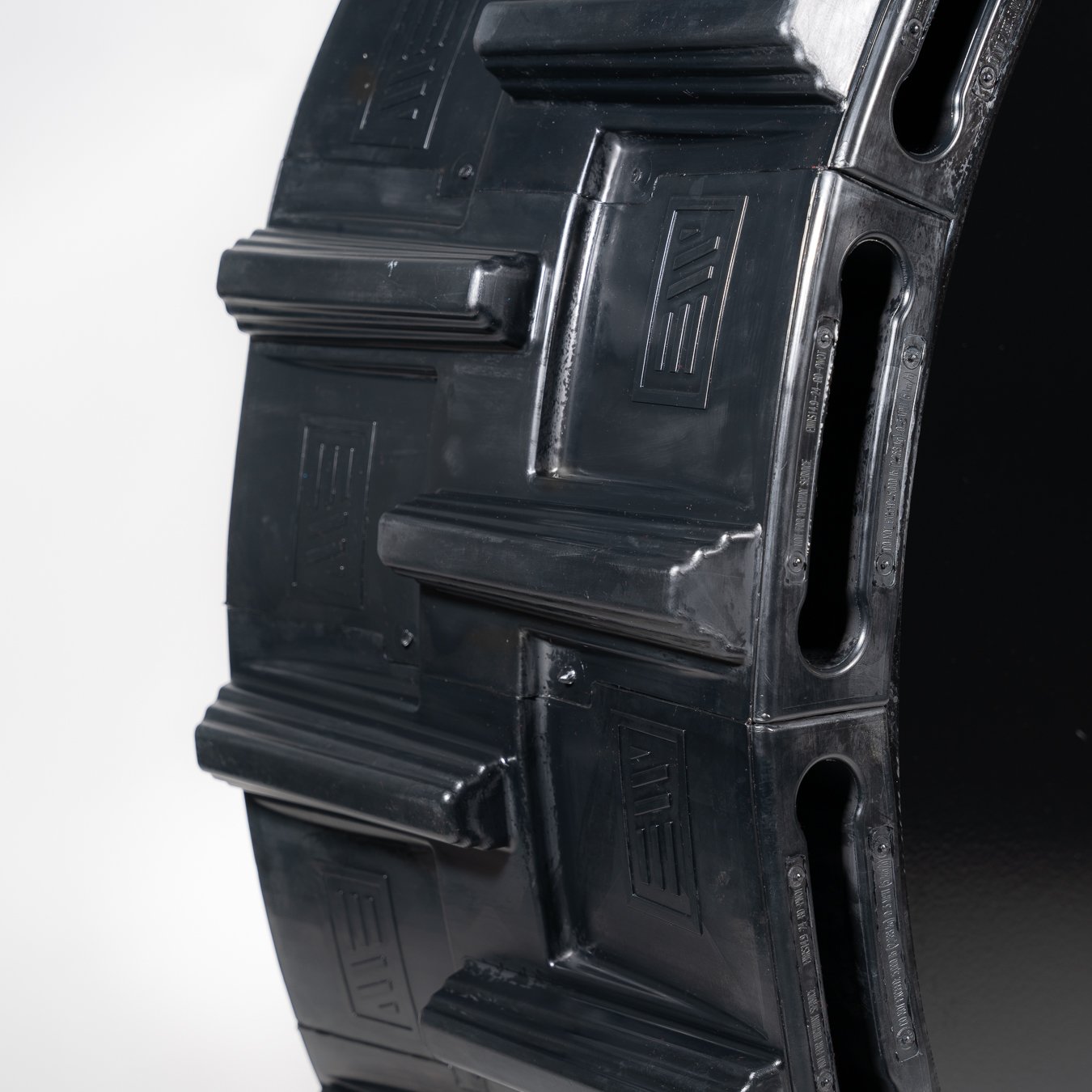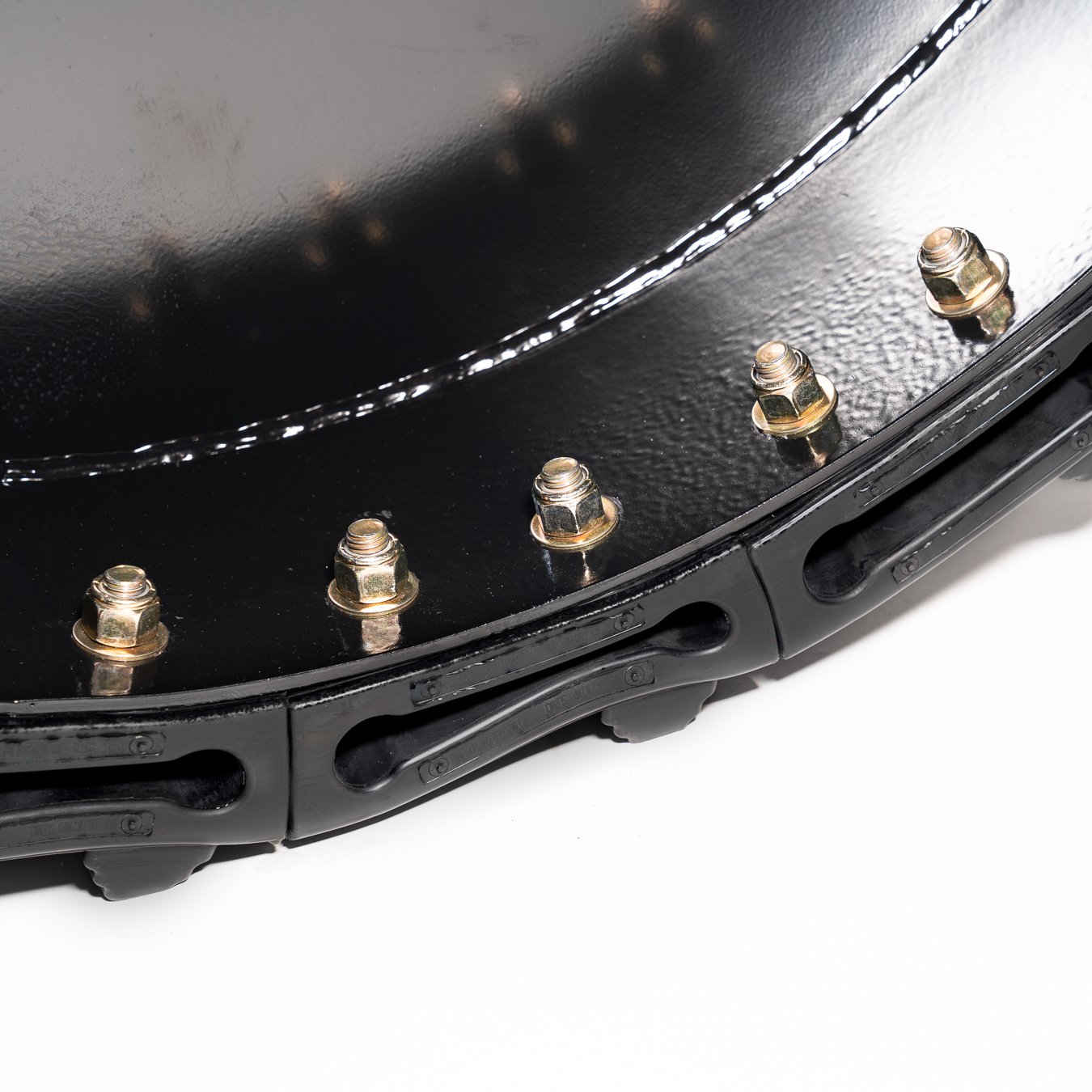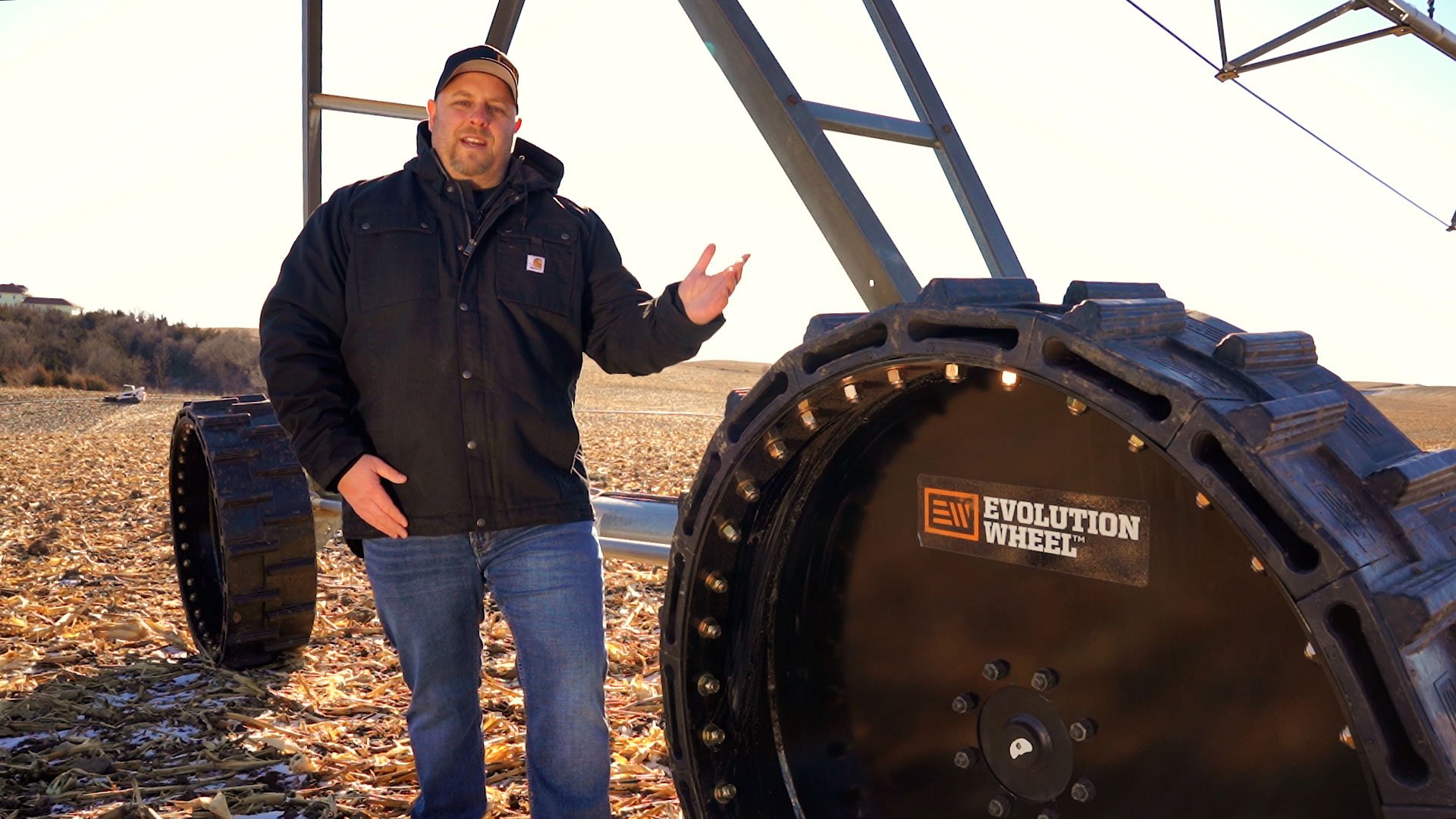Airless Irrigation Tires vs. Pneumatic Irrigation Tires Tread Pattern
What Is Bi-Directional Tread
one reason for deep rutting is directional tread patterns. Directional tread patterns found on most of the tires in the irrigation industry have a convex profile and push mud from underneath the tire away. Each rotation the pivot takes these ruts will get deeper. The EWRS-PIVOT is designed with a bi-directional tread pattern. Our tread pattern has a concave profile and lugs that don't push mud out to the sides. Combining these two features holds mud underneath the tire preventing deep ruts.
Core Geometry
Poor traction is not acceptable in the field. That is why our tires are built with core geometry. The core geometry allows the tire to compress and flex like a pneumatic tire would to wrap around obstacles which increases traction.
the cores are also designed to compress completely flat to push any material within the core out, creating a self-cleaning system.
EWRS-PIVOT SERIES
The EWRS-PIVOT series of airless pivot tires from Evolution Wheel offers the most advanced airless technology to the irrigation market. This solution delivers serviceability, traction, and floatation into one impressive offering.
Our tread design and tire profile offer greater traction through mud and obstacles. The unique concave contact face helps eliminate rutting by keeping dirt under the tire, where it belongs. The face of the tire is pointed inwards. Compared to typical pneumatic irrigation tires which convex shape push mud out from under the tire, causing ruts.
Our proprietary segmented design bolts onto our high strength wheel, allowing you the ability to service the tire quickly, eliminating the need to change a tire in the field.
Unlike other airless pivot tires, the EWRS-PIVOT compresses flat pushing material out, it's a self-cleaning system. The compressed cores elongate the footprint of the tire allowing it to wrap over obstacles increasing traction and reducing ground pressure.

Related Pages
If this page was informative, check these out:






